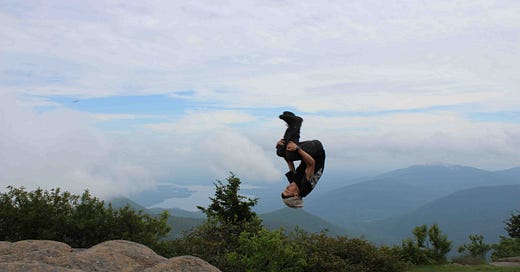Let’s say that the previous chapter convinced you. You want to be Ari, not Binyamin; the Prize Room, the sechar, will come when it comes, but the focus of life is meant to be down here. What are you supposed to do now? Does the Torah give guidance on how to actualize this perspective, beyond learning Torah and keeping Mitzvos?
To be sure, a significant section seems to address exactly this point. Even more striking, that significant section is exactly where it should be, based on the idea developed above.
Following Sinai
Earlier, we demonstrated that the introduction to Matan Torah, described in Parashas Yisro, conveyed Bnei Yisrael’s mission statement — to be a mamleches kohanim v’goy kadosh, a model nation for the rest of the world — as the purpose of their selection as the Chosen Nation. The rest of Parashas Yisro describes the Kabbalas HaTorah experience. Parashas Mishpatim follows with a selection of laws taught at Sinai: “V’eileh ha’mishpatim asher tasim lifneihem.” The last lines of the parashah describe Bnei Yisrael’s crowning glory, their commitment to everything they had been told over the previous two parshiyos: Naaseh v’nishma, we will do and we will understand! At this point, Moshe returns to the peak of the mountain for another forty days. What comes next?
The subsequent parashah, Terumah, introduces a new project, one of monumental scope and significance: Hashem directs Moshe to collect terumot, donations from Bnei Yisrael; from any person “whose heart moves them to contribute,” Moshe was meant to take what they gave. What was the purpose of these contributions? V’asu Li Mikdash v’shachanti b’socham — to build a place dedicated to Hashem, through which He would dwell among you, among the people. Two striking questions emerge from a cursory reading of these pesukim. First of all, for what purpose is Hashem asking for a Mishkan, a physical structure? Yeshaya proclaims about Hashem, “The heavens are My throne, and the earth is My footstool; what is the house that you will build for Me?!”1 Seeing as the Mishkan will never house Hashem, why is He asking us to build it?2 Second, reading carefully, the Torah never even said that God would inhabit this “home” that He’s asking us to build for Him — rather, “build for Me a Mikdash, and I will dwell b’socham — among you! Why not dwell with us immediately? What’s the point of the building?
Great Is Work
Rabbi Tarfon addresses these questions with an astonishing comment in Avos d’Rabi Nosson: “Great is melachah, work, for Hashem did not cause His Shechinah to rest with the Jewish People until they performed melachah, as it says, ‘V’asu li Mikdash v’shachanti b’socham.’”3 Only after Bnei Yisrael invested time and effort into this most ambitious project would it be the proper time for Hashem to dwell among them. Beyond the symbolic or spiritual significance that was going to be invested in each component of the Mishkan and the associated avodah, Rabbi Tarfon teaches that it was simply the act of engaging ourselves in a project on behalf of the Borei Olam which served as the “matir” for Him dwelling among us.
Camp Yagilu: Dirt = Happiness
It has become less and less common for people to experience the pleasure of working hard to accomplish a goal. Most of my summers were spent in a wilderness camp called Camp Yagilu. So many aspects of the camp played crucial roles in my self-development; an oversized one was the focus on working hard and accomplishing amazing things. On the first day of the program, the director, Rabbi Tani Prero, presents a formula: “Dirt = Happiness.” If you finish the day sweaty, with your hands dirty and your clothes streaked with mud, he says, I can guarantee that you’ll be smiling. Campers don’t really get what that means until they get the chance to feel it for real. So many aspects of camp incorporated this truth:
One of the central experiences of the first-year program is building projects. One week is dedicated to groups cutting down trees in the on-campus forest with handsaws and carrying them to a building site. The next week and a half is spent by each group designing, planning and implementing the building project of their dreams — ten to twenty feet up in the trees. Over the years, some incredible projects have been made, such as working elevators, Flintstone cars, and catapults.
Have you ever stood shoulder to shoulder with a friend and shared the burden of a handsaw, rotating as your grip starts to slip and your forearms begin to burn? Have you ever felt the satisfaction of watching sawdust stream from a burning hot blade, making twin piles at the base of the trunk? Or experienced the exultation of a tree finally giving in after hours of holding itself up, falling to the ground in respect of man’s command to dominate the land? And then bending down with your friends to raise that tree, on which you worked so hard, to bring it to the building site, lowering it down to await its placement in the structure slowly taking shape in your minds? Your body hurts — all over — but your soul sings. There is something uniquely gratifying about working hard on something and seeing it through to completion.
That wasn’t all. Night activity switched off between leather workshop and coalburning, the process of using coals to form cups and spoons out of chunks of wood; I still use the wallet I made in leather workshop thirteen years ago. The challenging hikes we took — more than thirty miles over three days, or ten days on the trail, or a bushwhack hike (no trail, just map and compass) over four peaks — also generated this feeling.
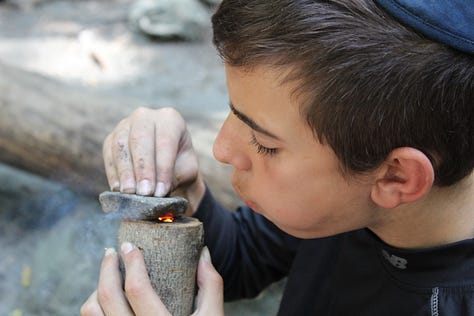
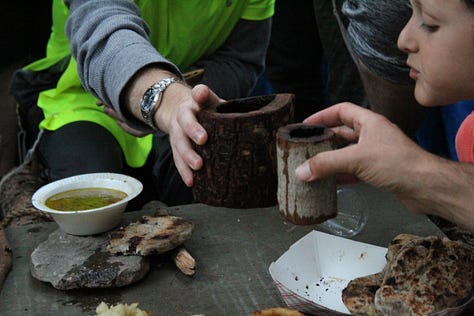
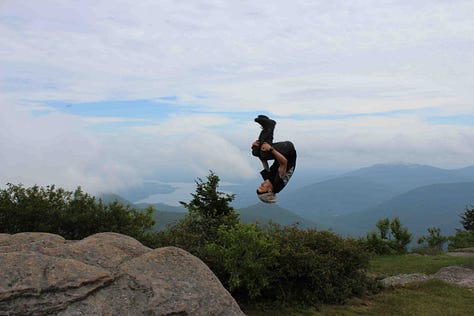

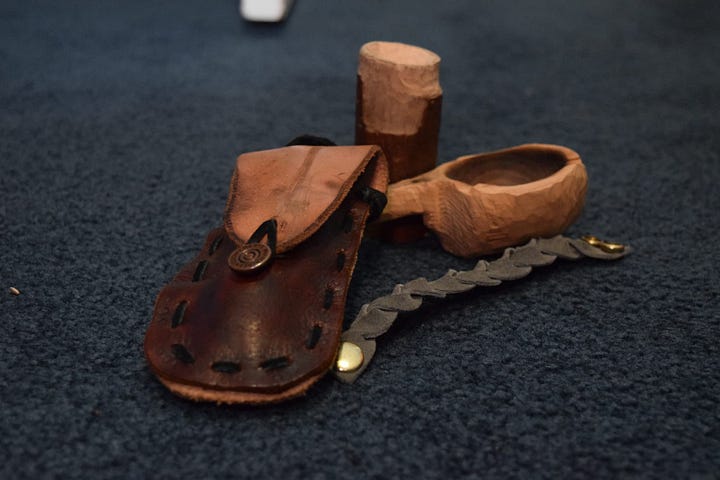
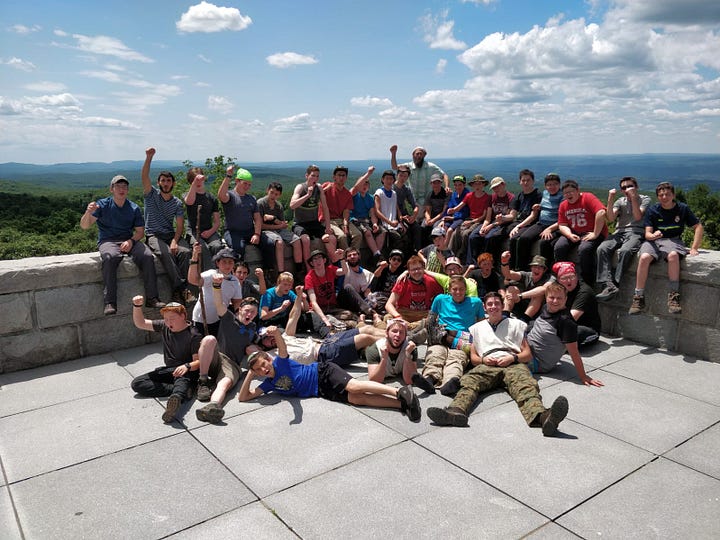
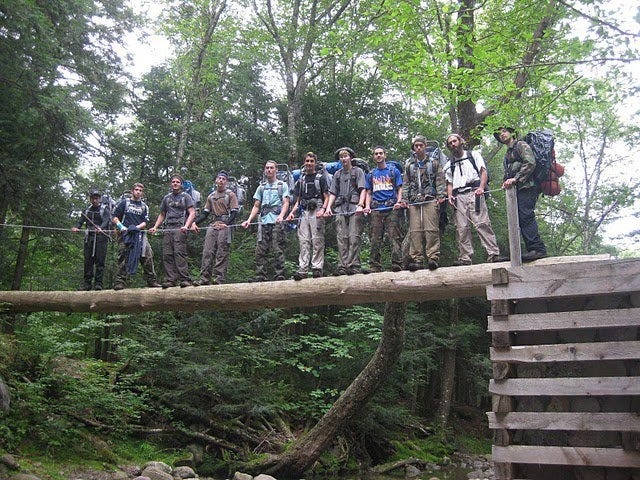
One of my favorite memories from my time in Yagilu is working for three consecutive summers on making fire by friction — the proverbial “rubbing two sticks together” (which, to be clear, is not exactly how it works) to make a flame. For most of the first summer, the most I got was whiffs of smoke and a few coals. By the second summer, I was consistently getting coals, but still no flame. At long last, by the third summer, I finally succeeded in creating a coal and gently blowing it into flame. To this day, I can picture my reaction: I roared, without words; an expression of three years’ worth of effort and disappointment, finally resulting in success. For a number of days, I kept that fire going; how could I let it die, after I had invested so much in making it?
As the pasuk proclaims, “Yegia kapecha ki tochal, ashrecha v’tov lach”4 — there is a unique joy, almost euphoria, that flows from eating the fruits of your own labor. How many people nowadays have had the opportunity to taste this simchah? Rabbi Tarfon identified this experience, of striving to accomplish a challenging task, as that which facilitates Hashem joining us in this world when we dedicate it towards His objectives.
Working for God
Rabbi Tarfon’s comment yields a totally different perspective on the function of the Mishkan: the goal was never for Hashem to “inhabit” the Mishkan, as that is obviously impossible. Rather, it was an opportunity Hashem granted us to engage in melachah, for His sake and in response to His command, and earn the opportunity to bring the Shechinah into our world. What an inspiring portrayal of the significance of this project! Symbolically, that coheres perfectly with the attitude developed above. Hashem’s intention for humanity and the Jewish People was for us to work hard and “build” the world;5 the Mishkan was an expression of that original commandment.6
Next week, we’ll continue with the Torah’s storyline to find out the next step in actualizing this theoretical ideal of making a home for Hashem in this world.
Yeshayah 66:1.
See Halachic Man, pg. 47-48, for the Rav’s presentation of a similar idea, also relating to Hashem’s command to build a Mishkan.
Avos d’Rabi Nosson 11:1.
Tehillim 128:2.
The symbolism is even stronger when connected to the Midrash Tanchuma’s idea of Hashem desiring a dirah b’tachtonim, quoted below.
This connection explains why the melachos involved in building the Mishkan are forbidden on Shabbos, which directs us to reflect on Hashem’s creation of the world and our role as continuing that initial creation on His behalf. See the chapter on Shabbos in Halachic Worldviews for more on this.
This comment from Rabbi Tarfon jigsaws wonderfully with two more comments — attributed to Rabbi Tarfon himself — at the end of the second perek of Pirkei Avos, both using the analogy of melachah to describe a person’s life in this world: “Ha’yom katzar v’ha’melachah merubah… — The ‘day’ is long and the ‘work’ is great…” and “Lo alecha ha’melachah ligmor, v’lo atah ben chorin libatel mimenah — The ‘work’ is not your responsibility to complete, but you are also not free to rest from it.”

